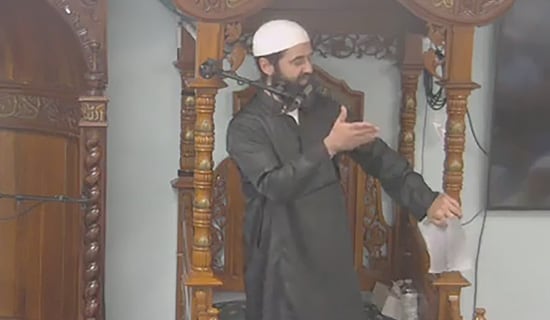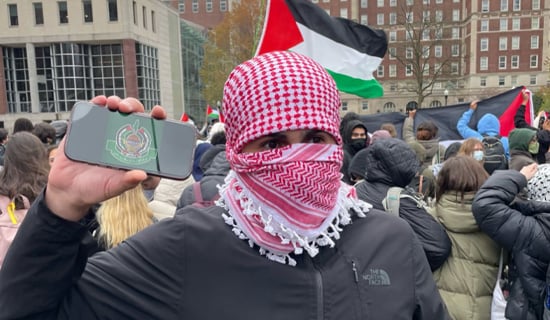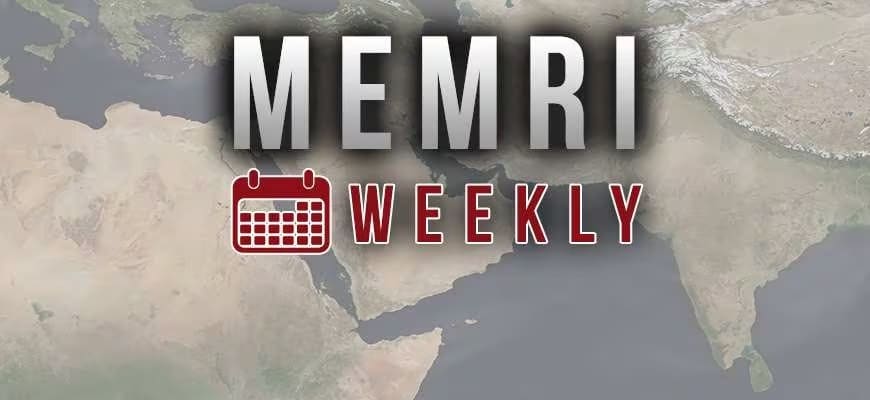In early June 2023, a controversy erupted in Jammu & Kashmir after principals of two schools allegedly asked female students to stop wearing the hijab or abaya – a full-body cloak – into classrooms.[1] "I told the teachers to ask the students not to wear colorful abayas on the premises, but they can come in abayas until they reach the school," said the principal of Srinagar-based Vishwa Bharti Higher Secondary School, stressing the need for "a proper dress code."[2]
This paper is not about the hijab debate in some states of India, but about The Resistance Front (TRF), a newly established terror organization that has emerged in India's Jammu & Kashmir in recent years. Soon after the school controversy erupted, TRF issued a statement in which it accused the Vishwa Bharti Higher Secondary School and the Govt. Girls Higher Secondary School which was mired in the same controversy, of "trying to safronize" Kashmir – with safronization referring to a policy of Hinduization.[3]
The TRF statement threatened to kill the teachers and principals of the schools, saying that TRF fighters possessed full details of "teachers and other staff who are involved in such incidents. They should not forget the fate of Rajni Bala and others."[4] Rajni Bala was a Hindu school teacher who was shot dead in May 2022 by Islamic terrorists who have been target-killing non-Muslims in Kashmir in recent years. Yet, the name TRF is itself relatively new.
A December 2022 notice released by the National Investigation Agency (NIA) of India offers rewards for information leading to the arrest of four terrorists, two of whom are Pakistani nationals, while all four belonged to both Lashkar-e-Taiba (LeT) and The Resistance Front, meaning there was no distinction between the two jihadi organizations.
The Resistance Front (TRF) emerged in 2018 or 2019. It appears to have a secular name, unlike the known jihadi organizations like Lashkar-e-Taiba (LeT), Hizbul Mujahideen (HuM), and Jaish-e-Muhammad (JeM), which seem to have gone underground recently. However, in terms of goals and methodology, TRF fighters have adopted the exact method of jihad followed by LeT, JeM, and HuM, continuing these groups' jihadi fighting against the Indian armed forces in Kashmir.
The birth of TRF is rooted in recent history. The global money-laundering watchdog Financial Action Task Force (FATF) put Pakistan on its grey list in 2018 for its failure to control terrorist financing. On August 5, 2019, the Indian government made a momentous decision to scrap Article 370 of the Indian constitution, thereby removing the special status of Jammu & Kashmir. While LeT and JeM went underground in Pakistan to help Islamabad escape the FATF censure, LeT's branch in India's Jammu & Kashmir began appearing under the banner of The Resistance Front (TRF) to continue the anti-India jihad.
For more than four decades, Pakistani military's Inter-Services Intelligence (ISI) has created, nurtured, sheltered, and backed jihadi organizations like the Islamic Emirate of Afghanistan (the Taliban organization) as well as LeT, JeM, HuM, and a host of anti-India terror groups. It is also known to use the tactics of creating, dismantling, renaming, and reassembling jihadi groups – like those triggered by the FATF action against Pakistan and resulting in the birth of TRF. Such tactics help Pakistan advance its foreign policy objectives in Afghanistan and India, especially in Jammu & Kashmir. As a result of these maneuverings and other steps taken by Pakistan, FATF removed Pakistan from the countries under "increased monitoring" or the grey list in 2022.[5]
However, ISI's creative policy of preventing jihadi organizations from working inside Pakistan but letting them wreak havoc elsewhere in Afghanistan and Kashmir remains in place. In May 2020, in an interview with journalist Vijaita Singh, Jammu & Kashmir's Director General of Police Dilbag Singh described TRF as "a seasonal group" established to help Pakistan escape international scrutiny arising from the FATF sanction.[6]
Vishwa Bharti Higher Secondary School denied that female students wearing abayas were barred from entering school (image: Twitter)
SUPPORT OUR WORK

Unsurprisingly, TRF has been claiming terror attacks in Jammu & Kashmir, which are essentially carried out by LeT and other jihadi groups. "This is a bid by the neighboring country [Pakistan] to give the group an indigenous shade; they are all backed by Lashkar-e-Taiba... Pakistan has been smuggling weapons from across the border to arm them," Singh, the police chief, said.[7] A report in January 2023 said: "Lashkar [LeT] and Jaish-e-Muhammad had religious connotations and Pakistan did not want that. They wanted to make the Kashmir militancy appear indigenous. Hence, they opted for 'Resistance' [as part of TRF's name]."[8]
Clearly, security officials in Kashmir do not see a distinction between TRF and LeT because none exists. During several security operations by Indian armed forces in Jammu & Kashmir, it emerged that the slain terrorists were Pakistani nationals, among them members of LeT, HuM, and JeM. However, attacks carried out by them were claimed by TRF.
In December 2022, a blog linked to TRF published a hitlist of 56 employees from the community, it caused widespread fear among Kashmiri Pandits, especially because Islamic terrorists have been targeting non-Muslims working Kashmir.[9] Kashmiri Pandits are Hindus employed in Kashmir Valley under the Prime Minister's Rehabilitation Package (PMRP), most of whom had left Kashmir due to threats from Islamist groups in the 1990s. The Indian federal government has been trying ever since to rehabilitate the Kashmiri Pandits who had left the Kashmir Valley.
In January 2023, India's Ministry of Home Affairs (MHA) banned TRF, declaring it to be a terrorist organization. The MHA notification named Sheikh Sajjad Gul as the key commander of the TRF and among other charges said it was "recruiting youth through online medium for furtherance of terrorist activities" and was also "involved in psychological operations on social media platforms for inciting people of Jammu and Kashmir to join terrorist outfits against Indian state."[10]
According to the annual report by the Jammu & Kashmir police department, as reported by the Indian media, "the maximum number of militants killed in the [Kashmir] valley in the year 2022 belonged to the TRF or LeT at 108, followed by Jaish [JeM] at 35. Additionally, out of the 100 individuals who joined militant ranks this year, 74 joined the [TRF] group."[11] Pakistan might have escaped from the FAFT grey list, but TRF's emergence as a jihadi group working as a decoy for Lashkar-e-Taiba in Kashmir reflects how Pakistan's policy of using jihadi terror groups continues unchanged.
* Tufail Ahmad is Senior Fellow for the MEMRI Islamism and Counter-Radicalization Initiative.
[1] Twitter.com/AabidMagami, June 8, 2023.
[2] TimesOfIndia.com (India), June 9, 2023.
[3] Twitter.com/seherBt121, June 8, 2023.
[4] Twitter.com/seherBt121, June 8, 2023.
[5] Dawn.com (Pakistan), October 21, 2022.
[6] TheHindu.com (India), May 5, 2020.
[7] TheHindu.com (India), May 5, 2020.
[8] IndianExpress.com (India), January 3, 2023.
[9] EconomicTimes.com (India), December 6, 2022.
[10] HindustanTimes.com (India), January 6, 2023.
[11] IndianExpress.com (India), January 3, 2023.




